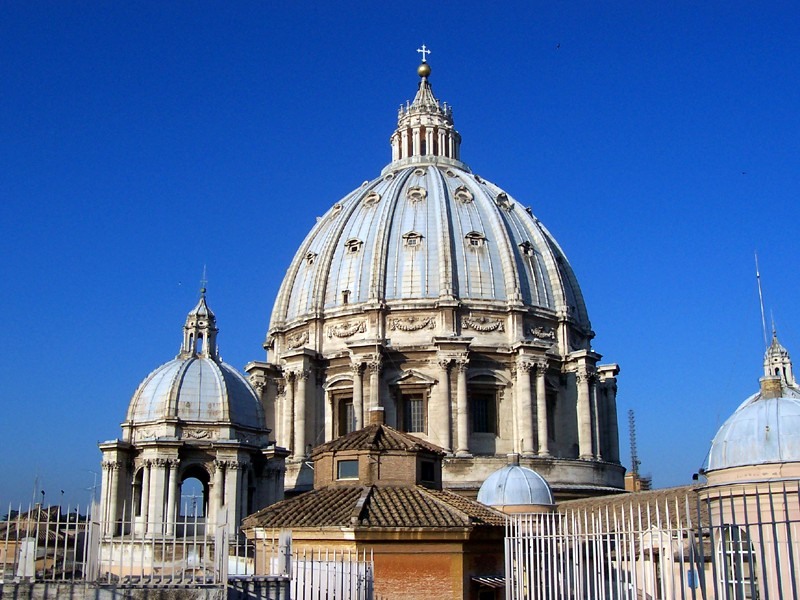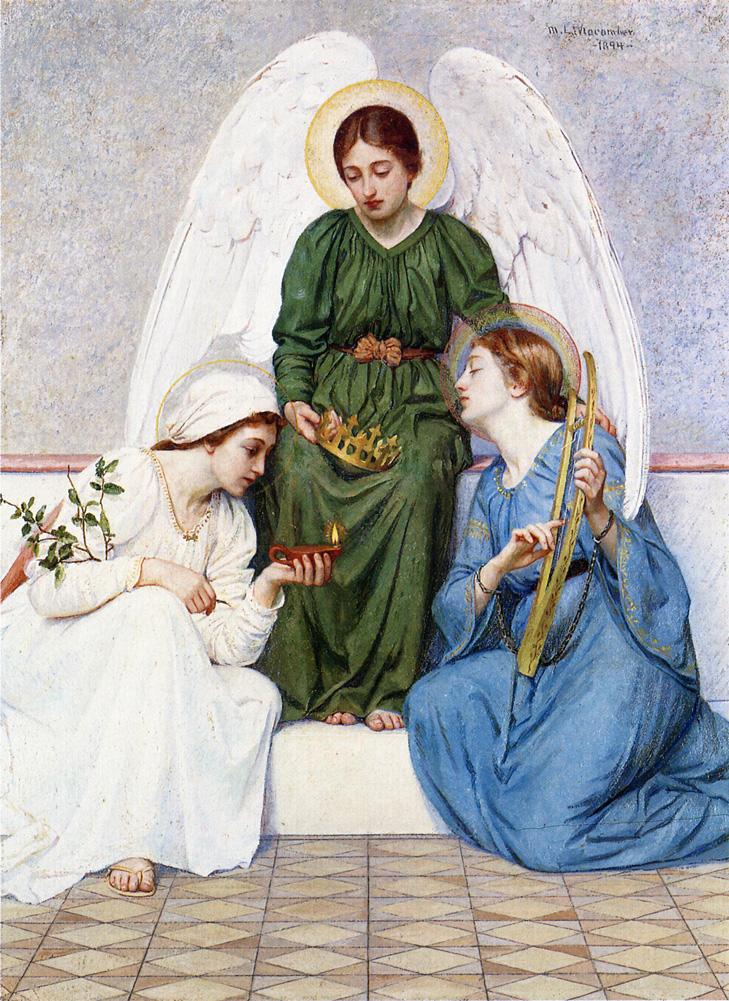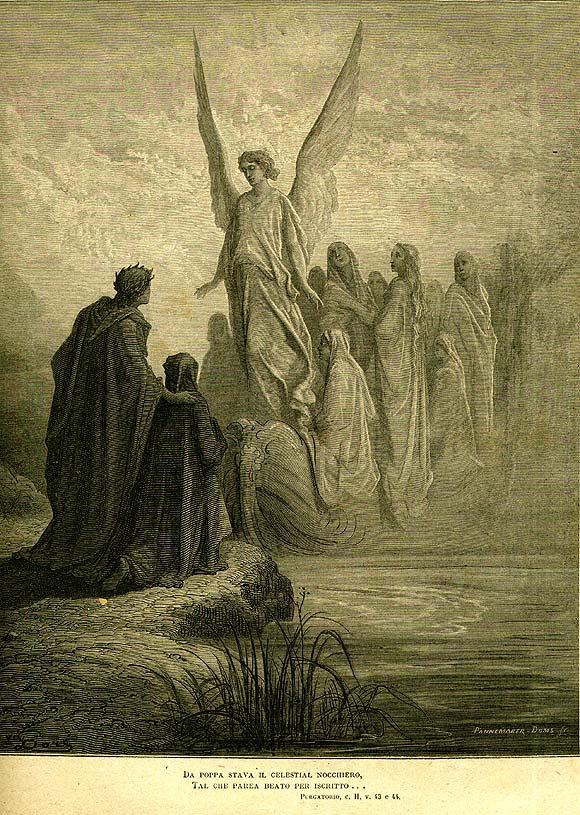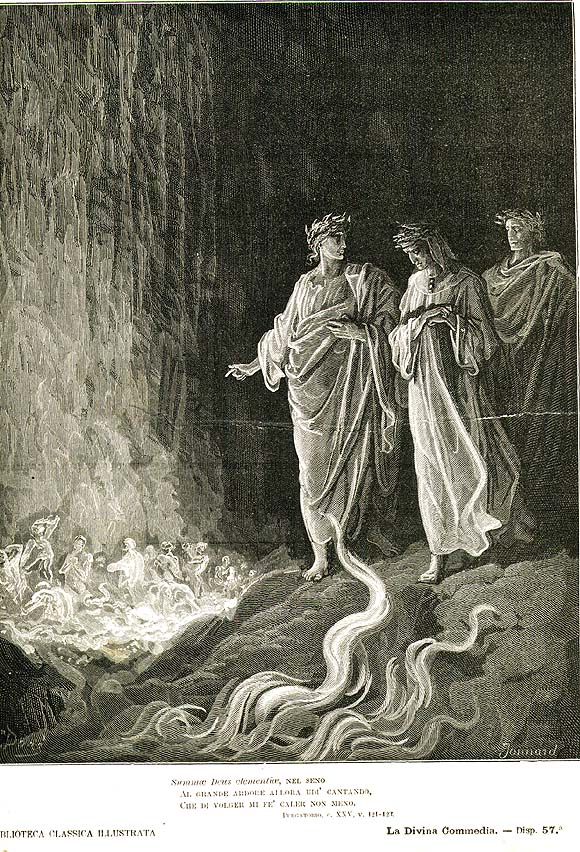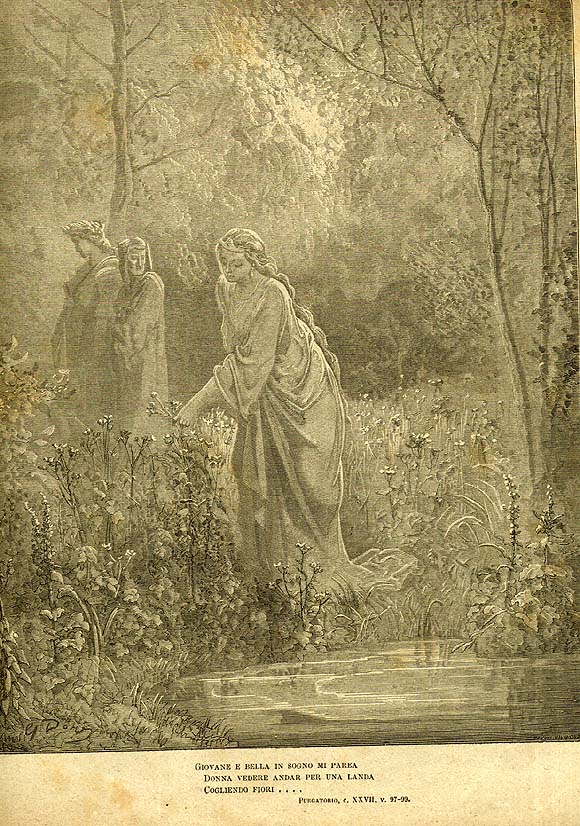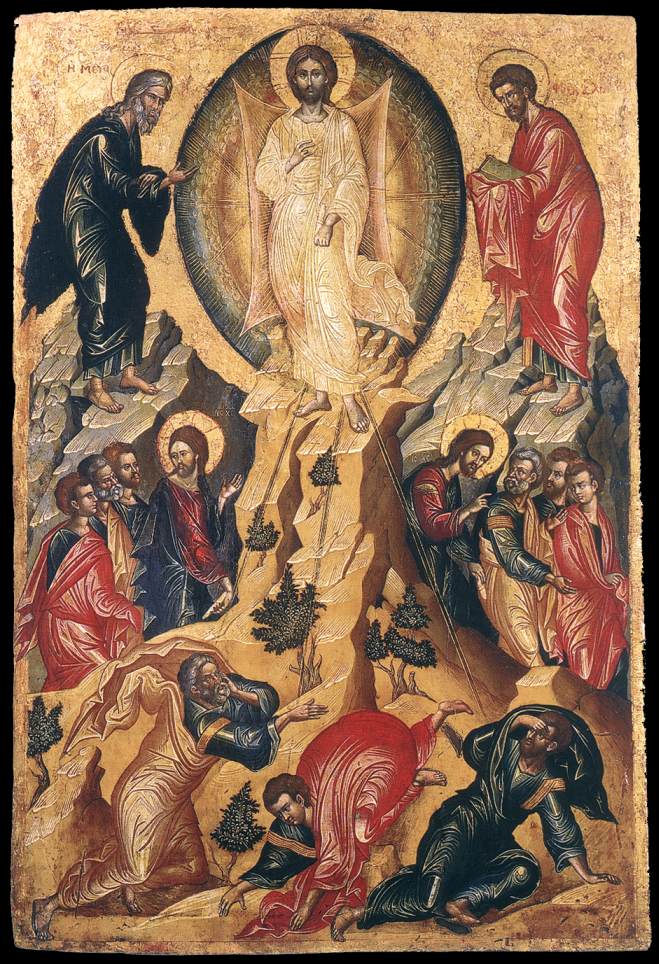Dante Alighieri, 1265-1321. Purgatorio
Enlarge text Shrink text- E purgatôri, 199-?
- Literature resource center (online), 30 November 2011(Divine comedy, Divina commedia, in three parts, Inferno, Purgatorio, and Paradiso; Inferno completed 1314, Paradiso completed in 1321)
- Purgatorio [Durling edition], 2003:page 3 (completed within a few years after 1314)
Purgatorio (Italian: [purɡaˈtɔːrjo]; Italian for "Purgatory") is the second part of Dante's Divine Comedy, following the Inferno and preceding the Paradiso. The poem was written in the early 14th century. It is an allegory telling of the climb of Dante up the Mount of Purgatory, guided by the Roman poet Virgil—except for the last four cantos, at which point Beatrice takes over as Dante's guide. Allegorically, Purgatorio represents the penitent Christian life. In describing the climb Dante discusses the nature of sin, examples of vice and virtue, as well as moral issues in politics and in the Church. The poem posits the theory that all sins arise from love—either perverted love directed towards others' harm, or deficient love, or the disordered or excessive love of good things.
Read more on Wikipedia >
 Title
Title


